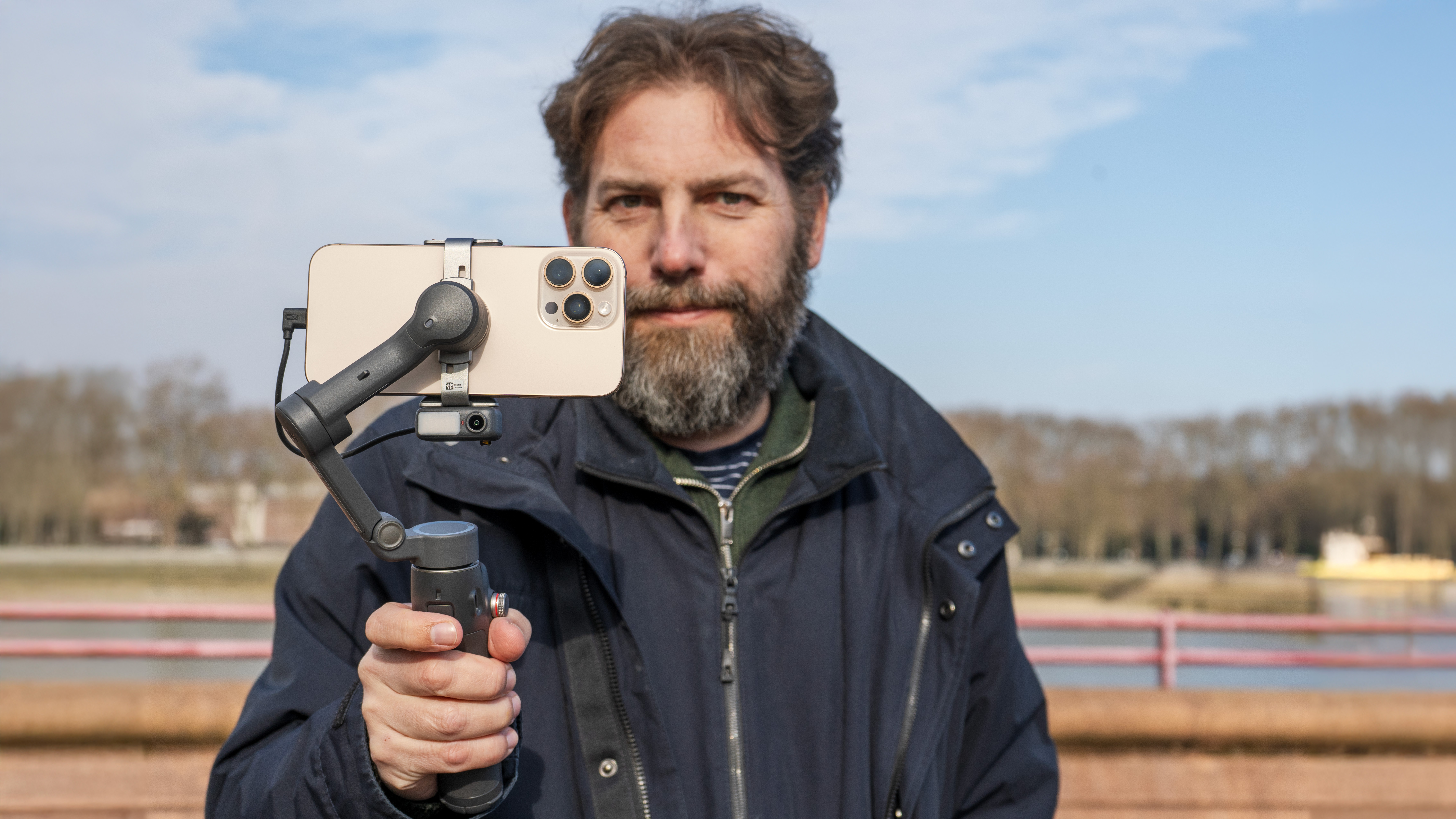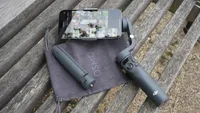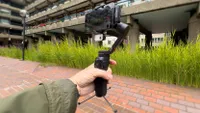Digital Camera World Verdict
As a premium phone gimbal, DJI has pushed the OM7P to the top of the game and offers all the features a serious creator will crave. It's not cheap but it is good value; it means business and your content viewers will appreciate your investment!
Pros
- +
Solid high quality build
- +
Excellent ergonomics
- +
AI tracking simple to use
- +
Fill light
Cons
- -
Dangling cable
- -
Wouldn't rotate with my Pro Max phone and extra-big phone case
- -
Works best in the DJI Mimo app
Why you can trust Digital Camera World
As phones have become a bigger part of the content creator's workflow, gimbals like the Osmo Mobile 7P have risen to the challenge of helping creators deliver slick professional content.
The previous DJI Osmo Mobile 6, or OM6 as most know it, represented a landmark by bringing an analog control wheel to the design. At once something which felt a little like an overgrown selfie stick became a pro tool capable of navigating focus pull effects and zoom as well as keeping movement smooth.
DJI aren't alone though – there is plenty of competition to deliver the best phone gimbal now, not least from Insta360 with their recent Flow 2 Pro. Some might say that got a hasty add-on timed as it was one day before the release of this new gimbal. It, too, offers additional pro features like assistance for the AI tracking and a fill light – but DJI is lanching both variants of their OM7 at once.
That's right – both variants. The line has also been split into two editions (OM7 and OM7P, the latter including the 215mm extension rod and the multifunction module, which includes the light). Here I'm testing the 7P, and I've taken it out on some serious jobs (creating content for the digital camera world TikTok); this is what I've found.
DJI Osmo Mobile 7P: Specifications
Payload | 170-300g, max 10mm thick |
Compatible Phone Width | 67-84mm |
Selfie Stick Length | 215mm (7P only) |
Bluetooth | 5.3 |
Battery Life | Quoted 10h |
Size | 288 x 107 x 93 mm (7P) |
Weight | 7P: 368g including multifunction module (7: 300g) |
DJI Osmo Mobile 7P: Price
The Osmo Mobile 7P – which I test here – launches at $149 / £135 / AU$219. The cheaper OM7 (without the extension arm) comes in at $89 / £85 / AU$159. This puts it in pole position against the obvious competition it had to beat – the Creator Bundle of the Insta360 Flow 2 Pro with AI accessory (the add-on cheekily announced one day before this launch).
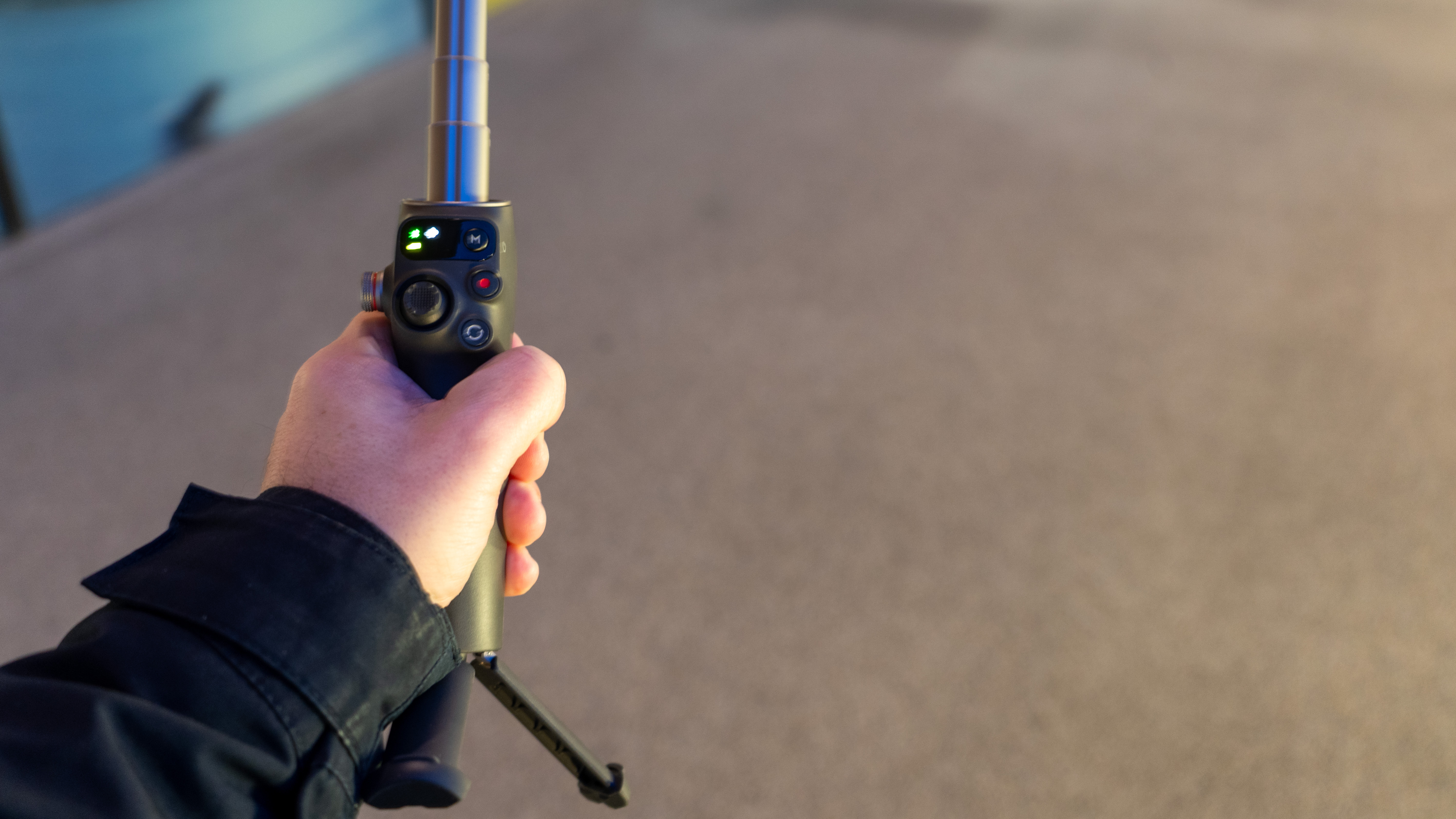
DJI Osmo Mobile 7P: Build & handling
DJI know how to build a convincingly professional feeling product, even when they're distinctly in the consumer space. This is no exception, with a robust feel. I also found it a little heavy for long use, but to be honest that is reassuring. That's 368g plus the weight of my iPhone 16 Pro Max and it's comedically big case. You can save weight by opting for the 7 rather than the 7P but I'd choose the version with the extension rod every time!
Sticking with the darker tone, the OM7P instantly feels more like a serious bit of kit than some competitors. It has a pull-out tripod in the base and a fairly stiff pull-out extension rod (mini selfie stick) in the top. Neither feel especially vulnerable though because of the robust construction.
The best camera deals, reviews, product advice, and unmissable photography news, direct to your inbox!
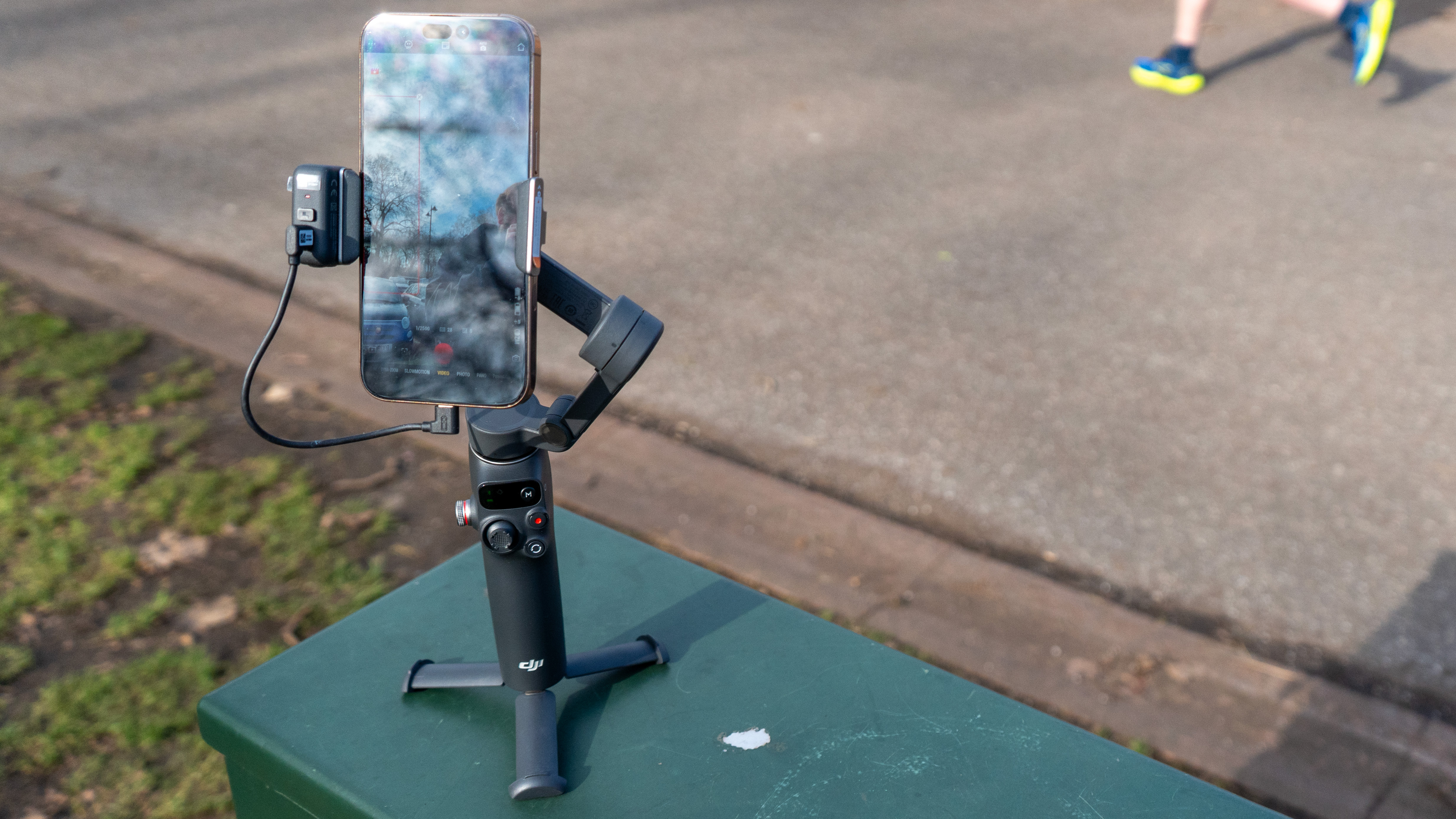
The new feature (in the OM7P) is the multifunction module, which isn't much bigger than my thumb but includes a tracking sensor and a light. It must be turned to face the direction of shooting, requiring a press-button release (don't worry, it won't just fall off) and a magnetic catch to slot into place again. It's fiddly the first couple of times, then very logical.
There is a USB-C port on there too, and a little connector cable and (because of my drone instincts) I found myself leaving them connected as I do my phone to a drone controller. It draws its power and does its job without the need for this – but when connected it can also deliver audio (you can connect a mic receiver to the gimbal) and top up the phone battery.
The module does allow for gesture-based controls – palm gesture to start or stop intelligent tracking, for example, or the classic 'V' to take a photo. Personally I find these more of a gimmick, but I know many love them, and they're there and work!
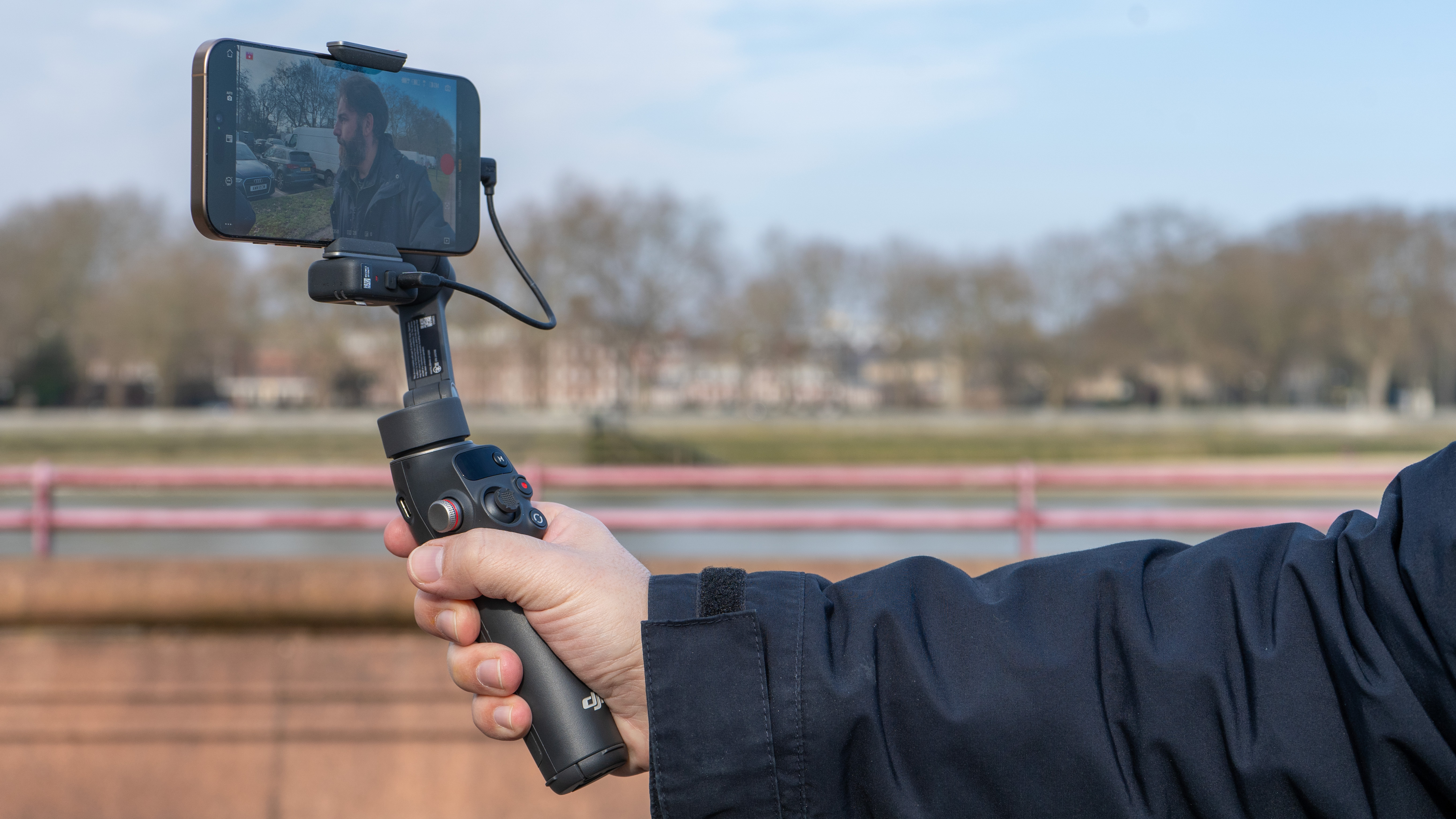
Operation is clearly geared to the right hand, though I found I could use it in my left too (I am right-handed, but thought it worth checking!)
Another feature Apple users might enjoy is an Apple Watch app for remote control of the gimbal (via the Mimo app).
DJI Osmo Mobile 7P: Performance
In terms of stabilization, my only concern is that it sometimes didn't seem as quick as I'd like, but shots were stable.
I did also try using the device with my slightly silly phone case (it has stick-out corners in case I decide to drop my phone onto concrete from several meters). They proved problematic when I tried to rotate the phone, but in a 'normal' case, or naked, there were no such problems.
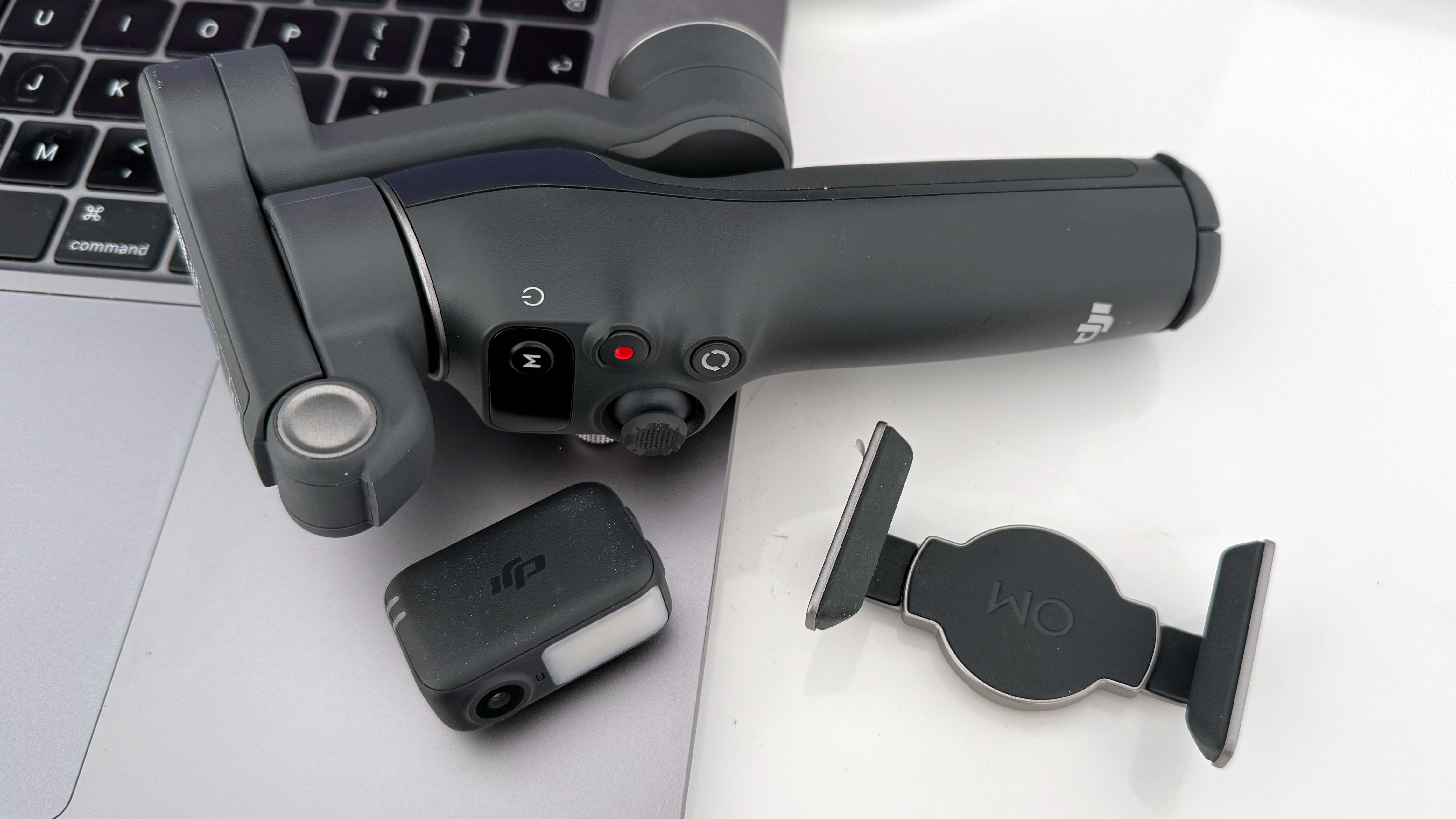
DJI Mimo is the best way to use the device because you can use ActiveTrack 7.0 – DJI's subject-tracking tool. You can simply drag to draw a box around your subject and, so long as you aim roughly, the device will do the rest of the work. This works brilliantly, and I used it to get a ton of very active B-roll shots.
Another thing to note here – it's easy to tap and swipe on the phone screen without feeling any kind of worry about the gimbal's motors resisting the force or not coping; this is a much more mature and robust technology than earlier or cheaper phone gimbals you might have encountered!
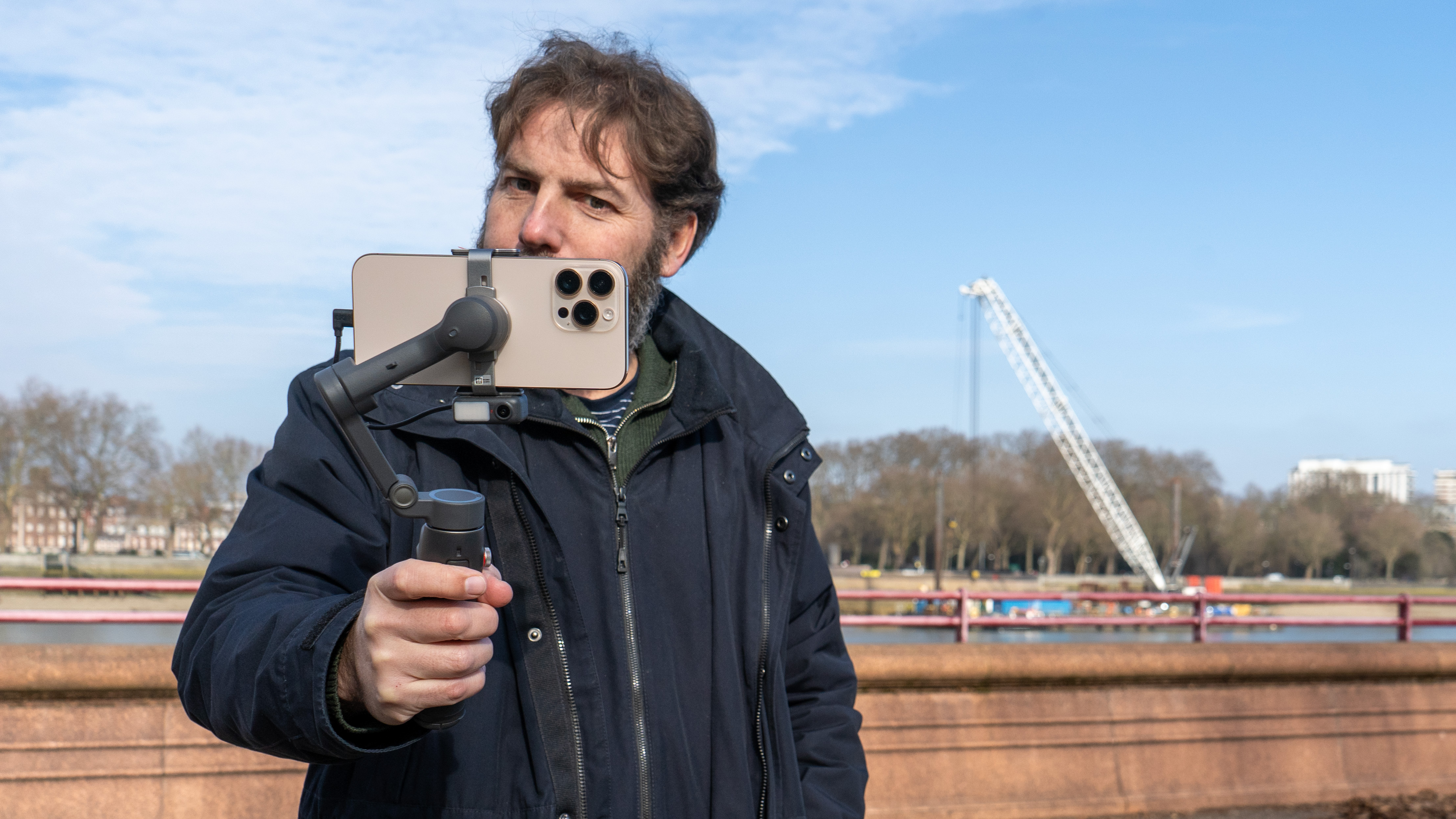
Overall verdict
Overall I found the OM7P to be an ideal choice for getting a more professional look to my contributions to DCW's growing TikTok account. It's great to have features like the light and the ease of compatibility with my preferred microphone, and the tracking is so good now I almost depend on it (users of the best camera drones from DJI will be familiar with the idea, but it works even better this close up).
It's worth remembering that using a device like this does make for smoothing footage, but will slow you down compared to just hand-holding your phone – it's best thought of as quicker better footage for serious purposes than just every day (the acceleration of your workflow happens because your footage is on the phone already, and for many that's now the editing platform of choice).
With that in mind, I like the DJI Mino app's seamless pushing of output straight into Apple's photos app. Despite the battery power-sharing features, my advice is still to think like a pro and remember your phone will be trying to upload video to the cloud so think ahead and get one of the best battery packs for your phone too. (If I had a wish list, I'd love a plug-in battery for the base like DJI's Osmo Pocket 3).
Overall, though, with a device like this in your bag, your phone is one step closer to replacing a cine cam and Steadicam!
Features | It's difficult to fault the number of features on offer, tied together by the app. Tracking is excellent, mic pass through is smart and battery top up will keep you shooting for longer than phone alone. | ★★★★★ |
Design | DJI's smooth grip, reversible light, and overall ergonomics are hard to fault, and the Mimo app is definitely the best way to see all the functionality. It was a bit of a shame to find a linking cable in the box though. | ★★★★☆ |
Performance | In general operation this is impressive. I found the tracking solid (though the AI was only 'okay' at re-acquiring subjects which had briefly popped behind things). My only issue is that it could be a bit faster. | ★★★★☆ |
Value | This is at the premium end, and DJI has kept the price relatively low while filling the feature list. This is only great value as a premium offering though; you can spend less if you're content with stability alone. | ★★★★★ |
Alternatives
Insta360 put a lot into improved AI for their second outing, with AI that can follow subjects on and off screen – this is an intelligent gimbal then the Flow 2 Pro – a lot of options for dynamic content.
Like the Insta 360 Flow Pro 2, the iSteady V3 has built-in tripod legs (though these are less sturdy than the Insta360 device’s ones). It also uses an AI tracker to follow your every move, though this tracker needs to be magnetically attached to the gimbal (and therefore could get misplaced).

With over 20 years of expertise as a tech journalist, Adam brings a wealth of knowledge across a vast number of product categories, including timelapse cameras, home security cameras, NVR cameras, photography books, webcams, 3D printers and 3D scanners, borescopes, radar detectors… and, above all, drones.
Adam is our resident expert on all aspects of camera drones and drone photography, from buying guides on the best choices for aerial photographers of all ability levels to the latest rules and regulations on piloting drones.
He is the author of a number of books including The Complete Guide to Drones, The Smart Smart Home Handbook, 101 Tips for DSLR Video and The Drone Pilot's Handbook.
You must confirm your public display name before commenting
Please logout and then login again, you will then be prompted to enter your display name.
